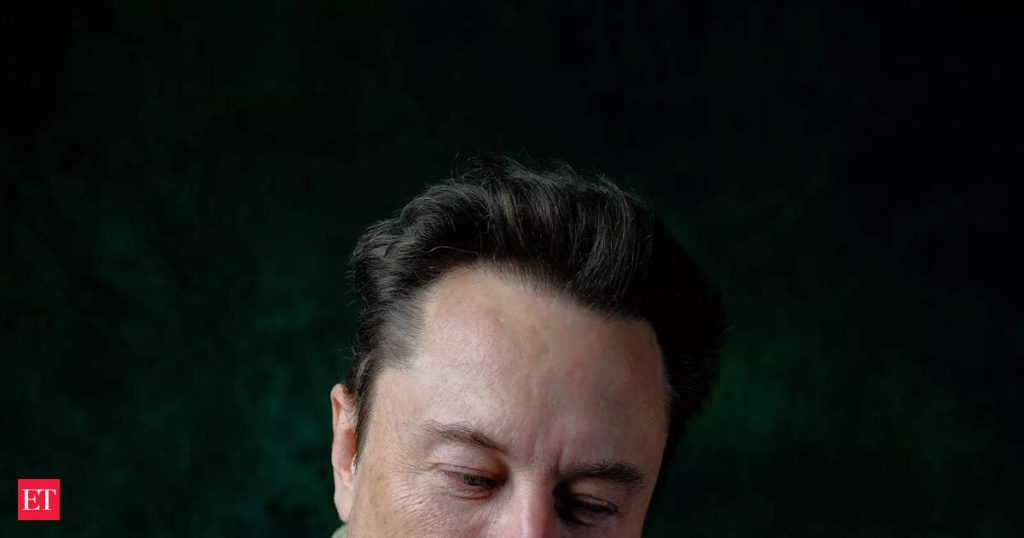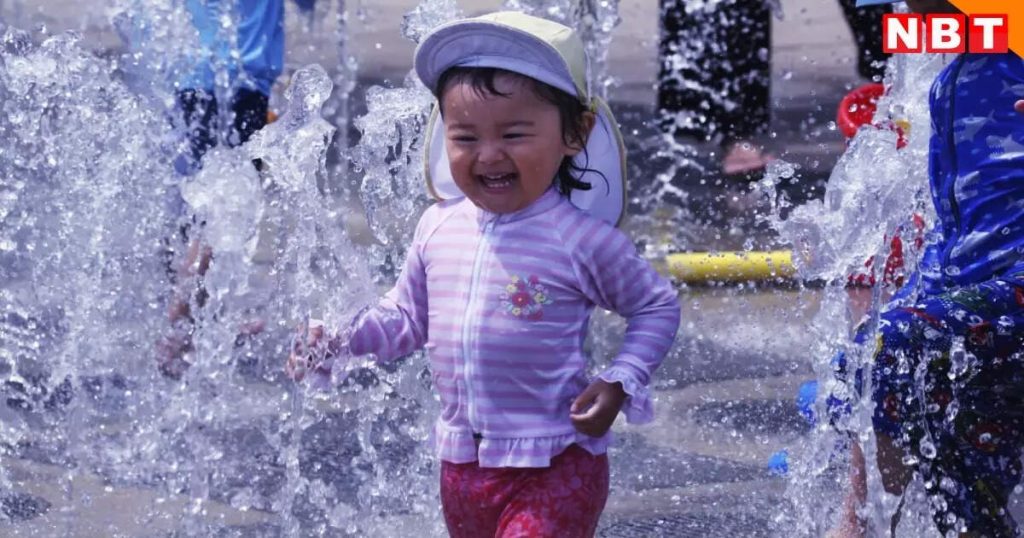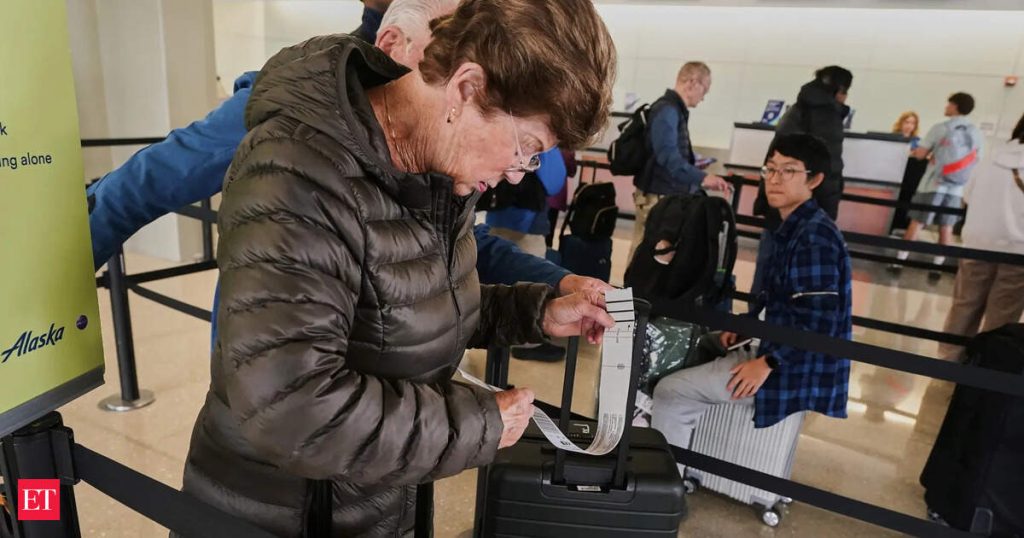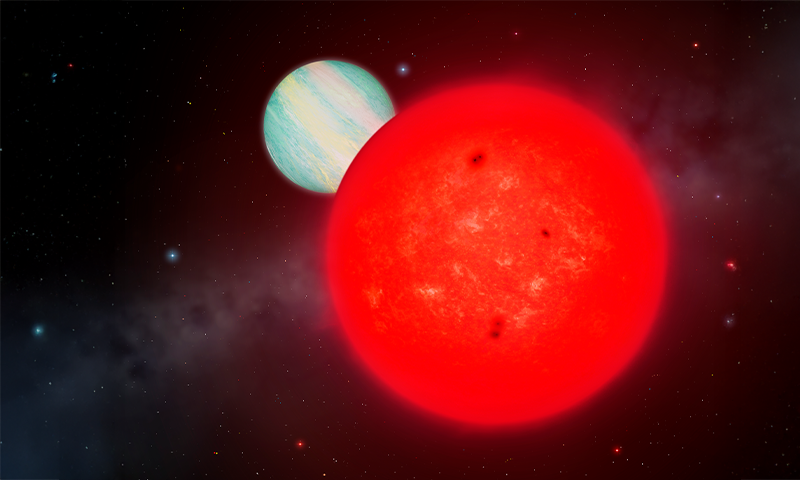Now Reading: South Korean Haenyeo Divers’ Extreme Lifestyle Is Shaping Their Genetics
-
01
South Korean Haenyeo Divers’ Extreme Lifestyle Is Shaping Their Genetics
South Korean Haenyeo Divers’ Extreme Lifestyle Is Shaping Their Genetics
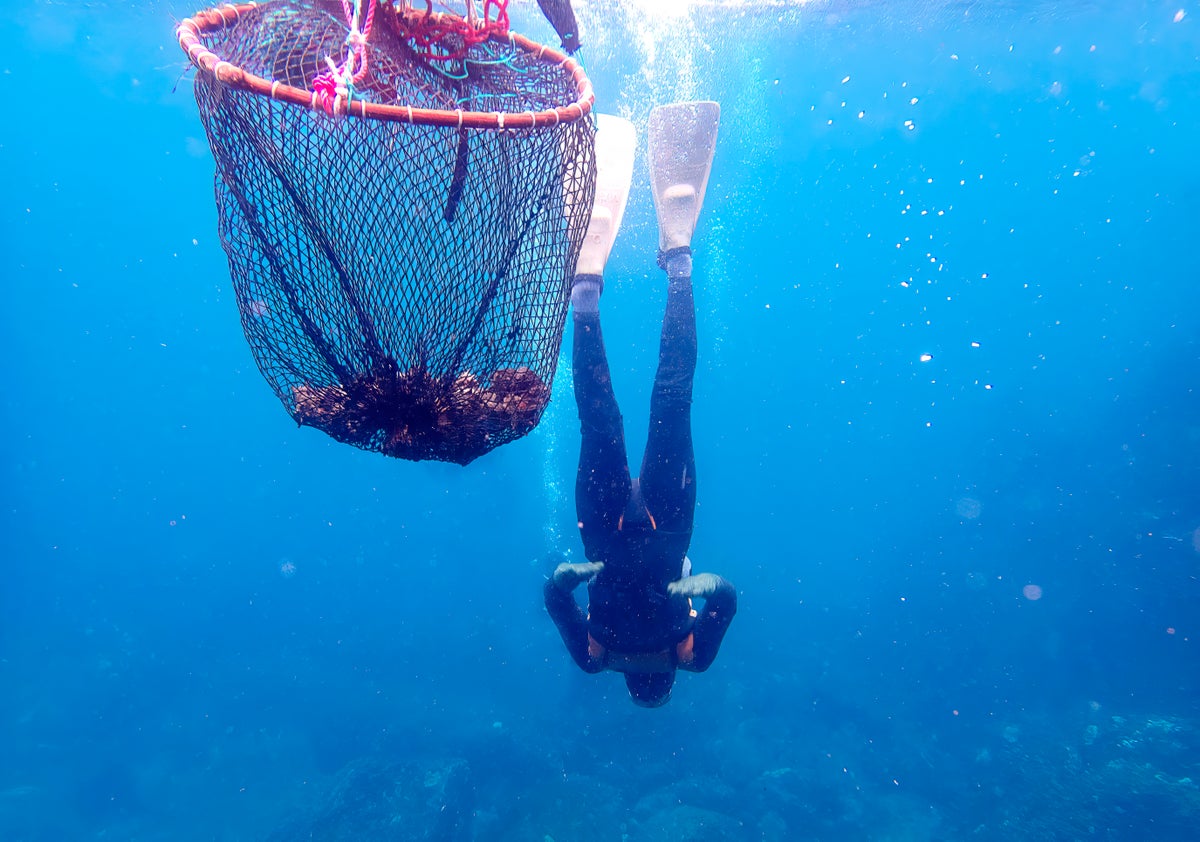
These ‘Real-Life Mermaid’ Divers Have Remarkable Underwater Abilities—And Genetics
The Haenyeo, an all-female group of divers on South Korea’s Jeju Island, spend much of their lives underwater without equipment—a “superpower” that may be written into their DNA
By Gayoung Lee edited by Lauren J. Young
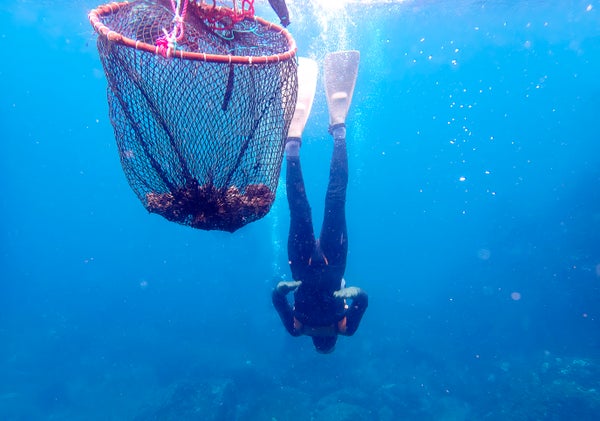
The Haenyeo of Jeju Island in South Korea are a group of female divers famous for holding their breath for up to two minutes and free-diving into their 80s.
Lynn Gail/robertharding/Getty Images
Often likened to mermaids in media reports and popular culture, South Korea’s famed Haenyeo (“sea women”) spend much of the day underwater, diving without scuba gear to collect abalone, octopus, kelp and other prized seafood. Admired both culturally and scientifically, they have been plunging into the frigid waters of Jeju Island since as early as 503 C.E.
Now, for the first time, a study has found both genetic adaptations and training effects that are unique to these women and could explain how the Haenyeo withstand the intense physical stresses that come with continuous diving. The findings, published in Cell Reports, zero in on specific genetic features of the Haenyeo that allow the bodies of these divers to more efficiently control blood pressure, for example. The researchers hope closer investigations into such genetic traits could inform future approaches to certain disorders or illnesses in the general population.
“The Haenyeo are really like superhumans,” says Melissa A. Ilardo, senior author of the study and an evolutionary geneticist at the University of Utah. “You cannot watch the Haenyeo dive and not think these women have superpowers.”
On supporting science journalism
If you’re enjoying this article, consider supporting our award-winning journalism by subscribing. By purchasing a subscription you are helping to ensure the future of impactful stories about the discoveries and ideas shaping our world today.
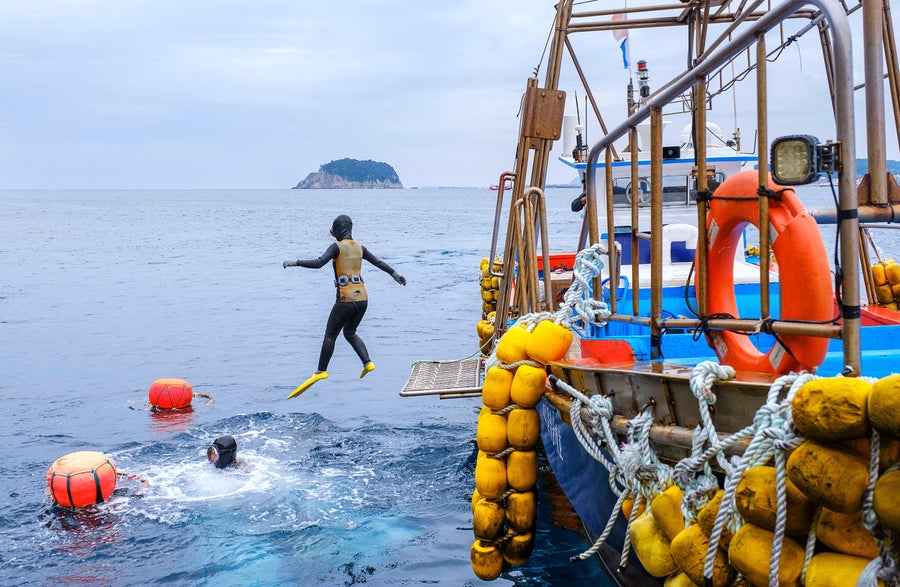
Haenyeo dive for a variety of seafood, including conch, octopus and seaweed.
Imago/Alamy Stock Photo
It’s easy to see the Haenyeo as enigmatic. For centuries, they have conspicuously maintained their own culture and style. They sport unique broad-rimmed sun visors and tattooed eyebrows, and their skin is tanned and weathered by a lifetime of wind and saltwater. After Haenyeo divers age past their diving years, they still stick close to the sea and work along the shoreline, often tying a cushion to their backside to rest on as they lay kelp out to dry. They have kept their tradition afloat through Japan’s decades-long occupation of the Korean Peninsula, massacres under dictatorships and relentless industrial development. And the new study suggests that there might even be a ring of scientific truth to “superpower” analogy.
“Given that [the Haenyeo] have this unique culture, unique language—all these things that are so different—it seems obvious that there would be some genetic differences,” Ilardo says. “But that wasn’t something that had ever been investigated.”
Ilardo, who studies genetics of medically resilient humans around the world at her aptly named Superhuman Lab, had previously examined the physiology of a diving people called the Bajau in Southeast Asia. Her team found the Bajau had an extra large spleens that could store additional oxygenated blood for lengthy dives.
“If one group of divers had evolved to dive, then maybe others have as well,” Ilardo says. The Haenyeo—with their long diving history—stood out to the crew at the Superhuman Lab as another population that could have developed diving advantages.
“What’s interesting about studying populations who have lived in a particular environment for many, many generations is that if there’s been a selective pressure in that environment, you can look at their genomes and start to pull out regions that appear to be essential for their survival,” explains Tatum Simonson, a geneticist at the University of California, San Diego, who was not involved in the new study. Those essential genetic irregularities are “probably linked to some aspect of physiology that has been beneficial over time in that environment.”
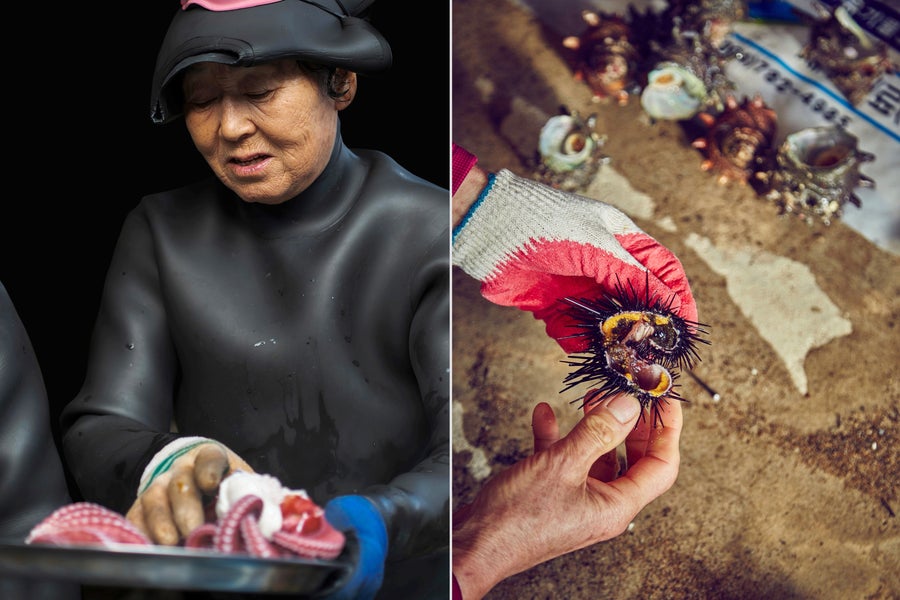
Haenyeo are considered a national treasure. The majority of the divers are above 50 years old, with the oldest being in their 80s (left); Haenyeo handle an assortment of seafood, including sea urchin (right).
zkruger/Getty Images (left); mo swinton/Alamy Stock Photo (right)
For the new study on the Haenyeo, the Superhuman Lab collaborated with physiologists from South Korea to simulate the effects of submersion on the divers themselves, compared with non-Haenyeo Jeju residents and mainland South Koreans. Participants laid on their stomach with their head over a bowl of cold water, periodically plunging their face under while the researchers measured how their reflexive submersion responses changed their heart rate and blood pressure.
The participants were all from the same country, yet they showed striking differences in these changes. Ilardo thinks that could be a direct result of natural selection. For example, “sleep apnea—which is kind of like unintentional diving in your sleep [in that it reduces oxygen availability]—increases the risk of hypertensive disorders during pregnancy,” she explains, adding that these can include preeclampsia (a pregnancy complication that can dangerously raise blood pressure). The Haenyeo are known to continue diving while pregnant, she notes. “If diving is increasing [a Haenyeo diver’s] risk of preeclampsia, that could take out an entire generation,” Ilardo says.
But the Haenyeo aren’t known to have a particularly high risk of hypertensive pregnancy disorders, and they have obviously birthed many generations of babies. Ilardo’s research suggests it’s likely that a gene allowing for better regulation of blood pressure has been passed down through the years.
Interestingly, the team found that all Jeju residents—even those without a Haenyeo family member—had a similar genetic variation that suppressed a reflexive blood pressure increase when diving. This suggests that the variation may have naturally spread throughout the island. It would also support Jeju’s surprisingly low stroke death rate, which is around 24.3 per 100,000 for not just the Haenyeo but all of the island’s residents—lower than the mainland city of Seoul’s rate of 25.7 per 100,000 and the U.S.’s rate of 37 per 100,000.
But Ilardo notes that some physiological differences, such as heartbeat changes, were unique to the Haenyeo. During the face-dunking experiment, Haenyeo participants’ heart rates slowed by 50 percent more, on average, compared with nondiver Jeju residents. This helps their bodies manage oxygen circulation through their bodies during a long dive, letting them “spend that resource as frugally as possible,” Ilardo says. She adds that this acquired trait could also develop in nondiver individuals who are not from Jeju Island. While the study did not test participants’ cold tolerance, that is something the Superhuman Lab is planning to investigate in future work with the Haenyeo.
Researchers can learn vital lessons about human evolution from such unique adaptations, says Ben Trumble, an Arizona State University biologist who specializes in human biology and was not involved in the new study. Cataloging the lifestyle and genes of special populations such as the Haenyeo could inform research into areas such as precision medicine, which requires a specialized understanding of how certain genetic variations translate into physiological traits, Trumble explains.
“We’re absolutely allowed to plagiarize from natural selection” in approaching health care, he says. “How natural selection solves a particular problem with a particular gene can give us clues for developing new drugs to treat some of the problems that people have in our society today.”
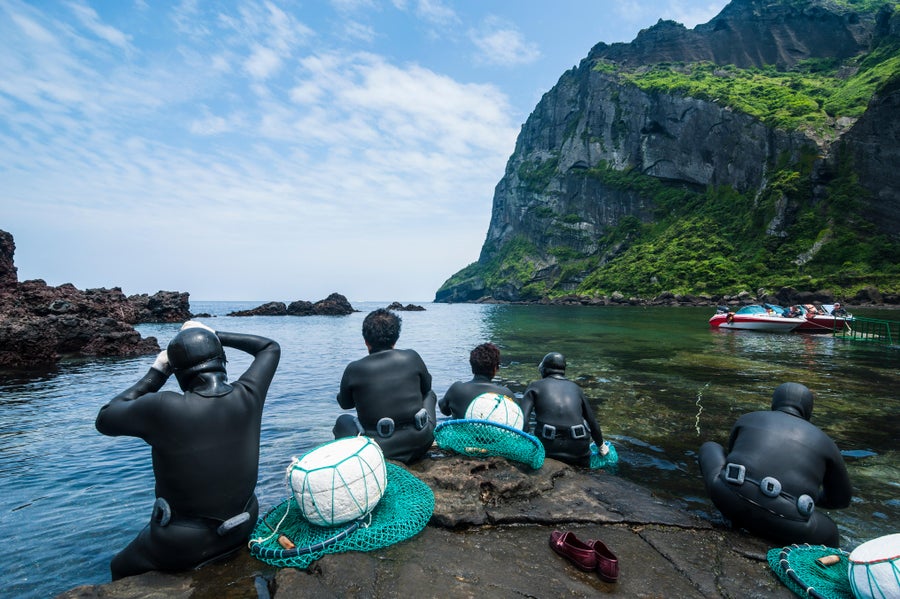
Haenyeo on Jeju Island in South Korea.
Michael Runkel/Alamy Stock Photo
Studies such as Ilardo’s take the “first step” toward medical applications, Trumble says, although he and Simonson believe any actual drugs that could emerge from such research will probably take longer to develop. In any case, Ilardo says, being able to pinpoint the genetic cause behind certain populations’ remarkable abilities could offer remarkable solutions in medical genetics.
“I was just blown away by how amazing [the Haenyeo] are, how strong they are and how they balance that with this kindness and sensitivity and femininity,” Ilardo says. “I think by focusing on what makes the population special and unique…, it brings a health focus instead of a disease focus [to medical genetics research]. And it’s certainly a much more fun way to do the science.”












